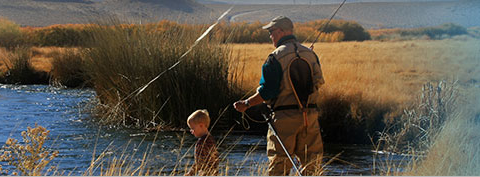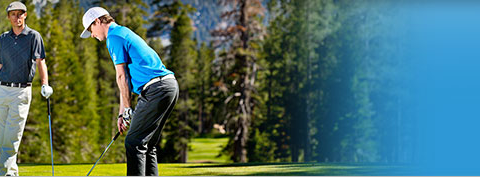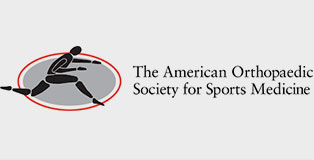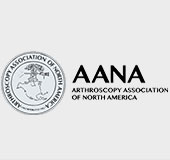ACL Reconstruction
ACL Reconstruction at Mammoth Orthopedic Institute
Unfortunately, in many cases the ACL ligament is too badly damaged to be repaired and new tissue has to be introduced into the knee. This procedure is called ACL reconstruction and is one of the most commonly performed knee surgeries in the United States today.
The new tissue required for reconstruction is called a graft and it can come from your own tissue (autograft) or from a cadaver (allograft). There are various advantages and disadvantages to the different types of graft and the decision making process is individualized based on your sporting activity, age, other injuries to the knee and your own preferences. Below we briefly review graft choices and describe our rationale for our preferred method for autograft ACL reconstruction – the quadriceps tendon.
Bone Patellar Tendon Bone (BTB) Autograft
This was one of the original grafts used in ACL reconstruction. The graft is strong and heals well because of the bone on either side of the tendon which grows into your own bone. Unfortunately, this graft can cause residual pain, stiffness, and weakness in the front of the knee. This can cause problems with kneeling. Some surgeons feel that the pain is related to removing the bone blocks. While rare, the remaining part of the tendon can rupture since some of it has been removed and this requires additional surgery.
Hamstring Tendon Grafts
This is another common graft for ACL reconstruction. This graft can be as strong as the BTB graft and does not have bone blocks which have to be removed. There is no risk of tendon rupture because the entire tendon is removed. In some cases, surgeons have reported that these tendons regenerate, but this has not been confirmed. Hamstring grafts can sometimes cause a loss of knee bending and in some cases the tendons are too small to make a robust graft and additional tissue must be added. In some research hamstring grafts are slightly more likely to re-tear than a BTB graft.
Quadriceps Tendon Grafts
Like the BTB tendon, the quadriceps tendon straightens the knee, but it is located above the patella (knee cap) and may therefore be less likely to cause pain in the front of the knee and difficulty kneeling. While this graft can be harvested with a bone block, new technology has allowed for us to harvest this tendon without a bone block through a minimally invasive incision approximately one inch long. Quadriceps grafts have been proven to be at least as strong as BTB grafts and almost twice the volume. Quadriceps grafts are always of adequate size and never require additional allograft tissue, and thus share many advantages of both of the other autograft type. Microscopic studies of the quadriceps tendon have shown that it’s feature are more like the normal ACL than other graft choices.
Quadriceps grafts are less commonly used than the other two types of autografts. Part of this is because the length of the tendon demands that the all-soft tissue quadriceps grafts be implanted using an all-inside technique. Since this is a relatively new, but clinically proven, technique, many surgeons are not as familiar or comfortable utilizing it.
Dr. Crall and Gilmer developed and described a technique for securing the quadriceps tendon graft that facilitates all-inside implantation. For more see here: www.arthroscopytechniques.org
Furthermore, at MOI we have tracked patient outcomes using our SOS (Surgical Outcomes System- https://surgicaloutcomesystem.com/for-patients) registry and have compared our results for quadriceps autograft to other graft choices and found benefits over the other techniques.
Even considering all of this, it’s important to discuss graft choice as part of the preoperative planning process as many factors can ultimately affect the graft choice decision.
Allograft
Allograft tendons are harvested from cadavers and undergo screening and special processing to ensure that they are sterilized. Because no tissue is harvested from the patient allografts are often less painful immediately after surgery allowing a quicker return to work/school. The downside is that allografts may not heal as well as autograft tissue and may have a higher chance of re-tearing compared to all forms of autograft. Because of this allografts often are not cleared for return to sport as quickly as autografts.
All-Inside ACL Surgery
Regardless of what kind of graft you choose a minimally invasive approach can be used to provide you the least pain and best possible chance for a quick and complete recovery. While ACL grafts can be fixed with large metal or plastic screws, pins, or other devices I prefer small buttons, approximately the size of a shirt button or smaller, in most cases. These buttons have been proven to be as strong as larger more invasive implants. The technique is called ACL GraftLink. For more information please see: http://www.arthrex.com/knee/graftlink
Risks of ACL Surgery
The overall complication rate for ACL surgery is very low, around 1%. However, various problems can arise that may require further treatment or lead to a loss of function or failure of the surgery. Some of these problems include, but are not limited to, stiffness, weakness, development of a new or worsening of an existing health problem, residual pain, residual instability, irritation from the hardware, failure of the graft, reinjury resulting in re-tearing of the graft, cartilage degeneration, bleeding, wound healing problems, and even damage to the nerves or arteries which can be temporary or permanent. In some cases, there is injury to other parts of the knee that effect the recovery from ACL surgery. If infection occurs surgery may be needed to wash the knee and long term antibiotics may be required. Fortunately, when complications do occur they are typically mild and can be treated without a need for further surgery.
Recovery After ACL Surgery
The process of recovery after ACL surgery is limited by the graft healing and becoming a new ligament. This often takes at least 6 to 9 months. Complete rehabilitation and return to sport is different for everyone but can take as long as a year. The importance of a home exercise program and working closely with a physical therapist is critical to obtaining the best outcome. In general, most patients are able to walk comfortably and return to regular daily activities around 3-6 weeks unless there was injury and repair elsewhere in the knee.





















